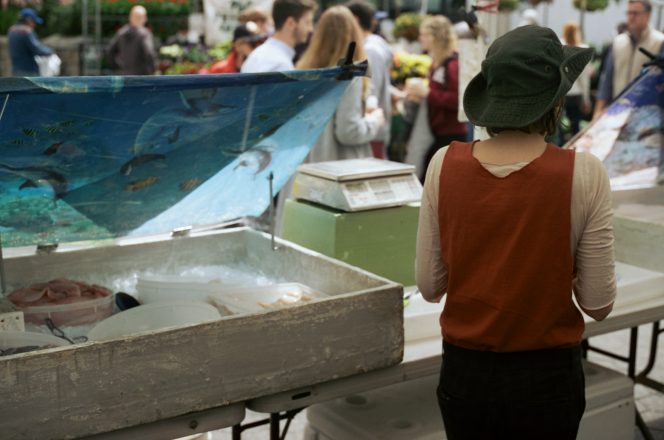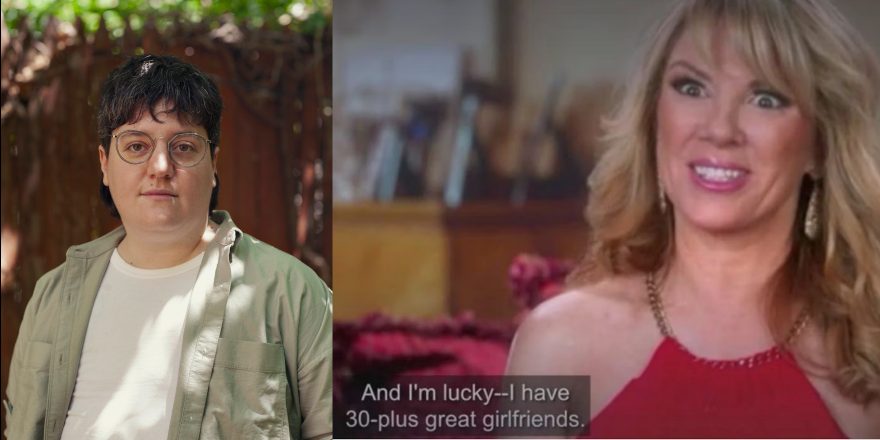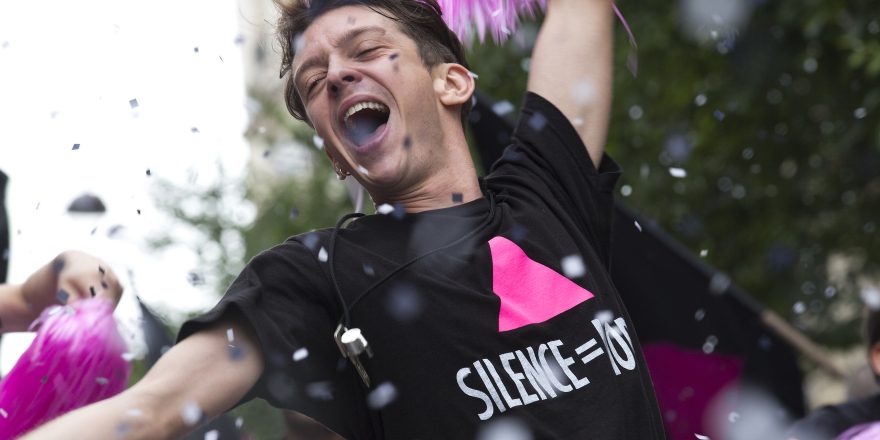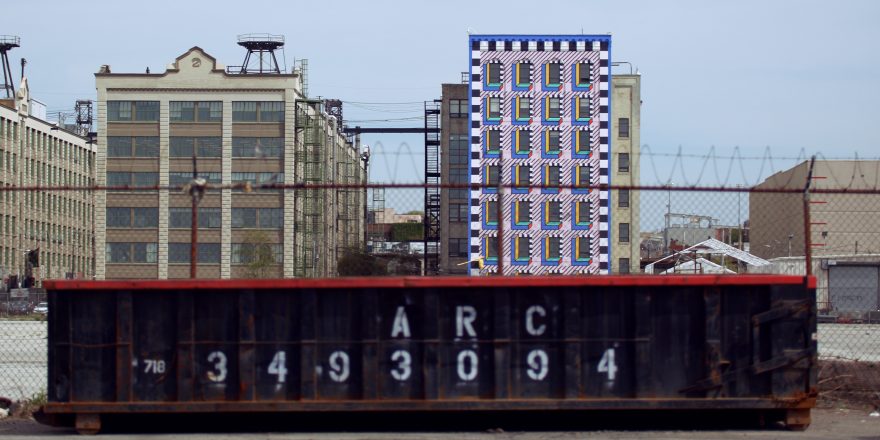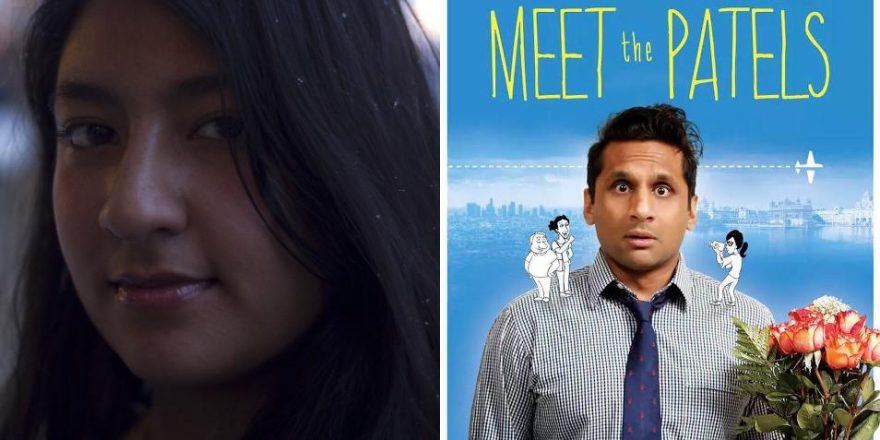Since January 2020, the oyster has been my world. It was then I decided to make a movie about this charismatic bivalve that cleans the water, builds habitat and protects the city against storm surges. The oysters, like us, needed community to survive – and so my team on the film started jokingly calling itself a “reef.” I wanted to explore how that community materializes in the people, spaces and themes that are connected by the oyster and also how that characterization functions in a city like New York. With rising sea levels and increases in erratic tropical storms, I was curious about what “the city” was willing to invest in its own survival and the necessary optimism of environmental activists and oyster laborers, working one small step at a time against a gargantuan threat.
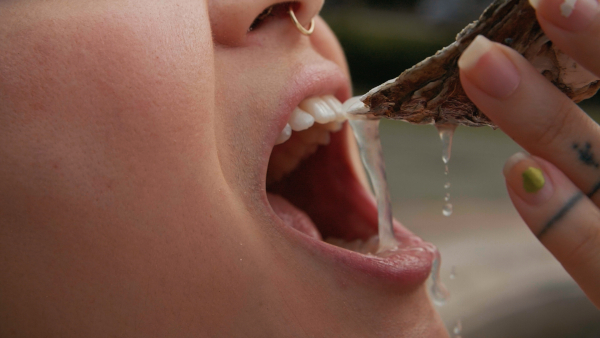
The “reef” and I filmed the first real scene of Holding Back the Tide on my 27th birthday, in early March of that year. A few days later, the city shut down. Our production screeched to a halt, and we found ourselves in a prolonged period of research that took some unexpected turns, including my employment at the Union Square Greenmarket as an “essential worker,” selling fish on Saturday mornings.
Although the film was keeping me connected to a purpose and a community, I was living alone, freshly out of a relationship, and like many New Yorkers I felt scared and lonely in the Covid epicenter. I didn’t know how to construct a social “pod” and I was hungry for human interaction. I soon heard that my friend Samuel Budin, whom I’d met through the arts community in Brooklyn, was seeking coworkers for his job at the market. Despite not being much of a morning person, I heartily signed up on the condition that there would be oysters, such that I could use it as a way to get close to the subject of my desire, to regularly be in touch with the main “character” of the piece. It also turned out to be a wonderful way to connect with the other main “character”: New York City.
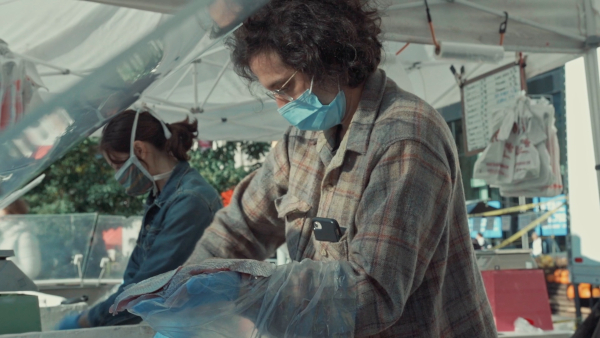
My first day at the fish market, I made a few reasonable (read: rookie) mistakes, switching out this fish for that. Sometimes the customers were wiser than I, kindly assuming I knew more than they did with insinuations such as, “If that’s the cod, what’s this?” (Cod, actually.) Perhaps a few happy accidents occurred; I called it fate intervening when a man waited for me to bag up three pounds of blowfish before redirecting me to the whiting he’d actually wanted, but graciously and excitedly took half the blowfish home anyway. I undoubtedly gave one woman pollock in place of haddock, but I don’t think she minded much.
But I did make a careless mistake, repeatedly, by unknowingly choking the oysters. Bag after bag, I counted them and wrapped them up like I did with all the other fish. I then twirled the top around clockwise, struggling to find the plastic end within the loop I created separate from my loose latex glove, and eventually pulled it through. But unlike the other filets of fish or pounds of squid I was wrapping up, those suckers were alive, and like all living things, they need to breathe to stay that way. I wonder if any of the customers had the wherewithal to check on the bags while they walked around to other stalls and went on with their day. Maybe the guy who got six “thick” ones, specified, to go along with his monkfish liver, knew enough not to trust my absentminded bagging. I wonder if the dozens that left with the mom and daughter all made it back without opening up. Or if I’d spoiled the appetizer for the stylish, Tampopo-like couple who would whisper their cooking plans to each other before ordering their week’s selection in broken English. I wonder if they doubted that I knew what I was doing, if they trusted me. For months, I’d been reading about oysters like I was fangirling over a celebrity, delighted at coming to know their intimate habits, their history, their environmental impact, all the hot gossip. So why was it not until I woke up the next morning in a cold sweat that I remembered they needed room to breathe? I took this series of mistakes as a challenge, and slowly started cooking my way through every fish we offered, distinguishing myself to the customers as a resource for recipes (while others had more knowledge about the seasons and the conditions under which the fish were caught).
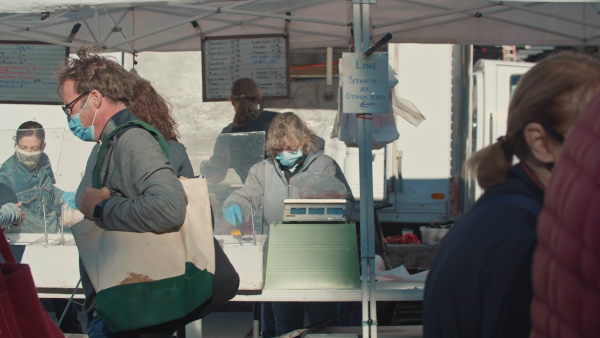
After a few weeks, I’d worked the booth on a nice day, a day with a summer storm, a day with a protest passing by, all days during the absurd health crisis. When it rained, the tent leaked and the water seemed to want to join up with the fish again. Sam had to take a long stick to relieve the tent’s folds from caving in on themselves, water splashing the outskirts of the stall. The Post-Its on which we took orders got soggy and the customers would scatter. I became sensitive to the city’s collective mood and felt a part of it. I adjusted my vision to seeing the public world through the framing of the flaps of the stand’s tent, experiencing the present as it quickly became the past. I watched the trends of the six feet of distance grow and shrink with the Covid tensions, saw Black Lives Matter gatherings of all sorts passing through and felt the square’s reactions to them. I was there on November 7, when the market erupted with joy and relief. The woman I was serving at the time asked me what had happened and, happily informed by the atmosphere, I delivered the news that Biden had won the election. I was there when I learned that my paternal grandfather had passed away, a personal milestone delineating a distinct before and after. The longtime stand workers told similar stories, using the job as a framework for understanding their personal ups and downs, as well as cultural markers – including when the stand used to serve customers downtown in the early 2000s. I started imagining the present from the perspective of the future, influencing how we would eventually situate the film’s perspective in time.
On most days, the fish smell was totally palatable, and I would even go so far as to say kind of pleasant, especially when the smell of fresh veggies and herbs also wafted through. I became accustomed to a routine visit from the nearby Breads owner, who would give us pastries to snack on between customers, so my memory of the stand tastes a bit like butter. Occasionally, we were treated to a musical performance by a busker set up nearby. My favorite was when Wael El-Halaby would play, and the afternoon became soundtracked by his unreasonably sweet violin melodies. I found myself suddenly aware of a preemptive nostalgia, knowing I wouldn’t always be here and wanting to capture the feeling. I bought a CD from Wael as a preservationist move, and we chatted about the vigils going on for Elijah McClain led by other Black violinists. Later, Wael agreed to have his music included as part of the film’s soundtrack, which scores the scene at the market, drifting in and out of earshot just as it had in real life.
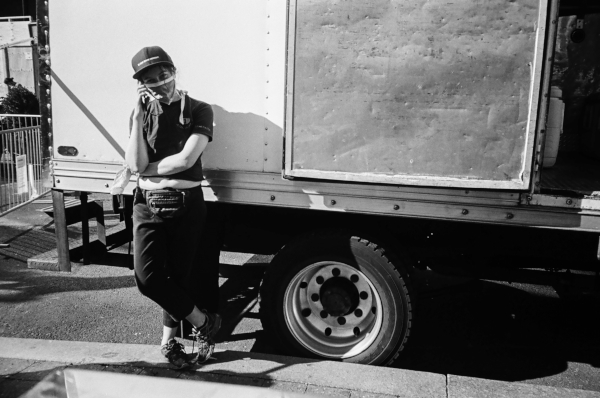
I may have been particularly vulnerable to these softer emotions in my delirious state. I never could quite get the hang of both the 6:30 call time and a reasonable bedtime the night before. The other employees and I would one-up each other in our stories of sleeplessness. Groggily, Sam and I would quietly give reports of our dating and artistic lives between serving customers and playing word games (replacing the word “kiss” with the word “fish” in pop songs is a highly recommended form of entertainment). Sam and I would trade recipes and sometimes we’d even cook together after work; we became extremely close. Each time I see the wide shot of us bagging fish next to each other in Holding Back the Tide, I feel grateful to nod to this portion of our friendship that was otherwise so insular. Sam is a brilliant multidisciplinary artist who shares my affection for character and happenstance. They’re a film photographer and writer, who often hosts old-school picture shows of their photographs by projecting them live and narrating their experiences. They have a quiet, offhanded way of speaking about the day-to-day world. Even when they’re not performing, they speak out of the corner of their mouth, quickly, as if having an aside. Sam is short, Jewish, bespectacled, and seems culturally unchanged by the last 50 years, though they’re only in their mid-thirties. They’re a bit of a polymath, and every once in a while I’ll learn about another craft they’ve devoted themselves to when they invite me to, for example, see their country band play. It was at one of the photography shows where I learned they sold pork on the weekends, but it wasn’t until the country show that I learned they sold fish, too. They had to leave the bar early so they could wake up early and take the long walk, preferred, to Union Square. Little did I know I’d be biking along to meet them there a mere six months later.
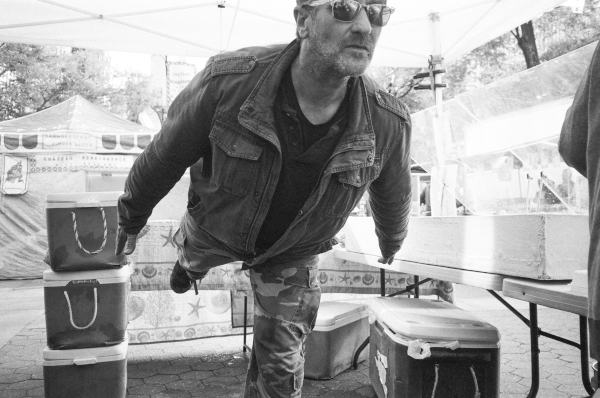
Before I took the job, Sam gave me a run-down on the characters at the stand including “Aunt” Jan, who has been working at the stall for decades. I’m always getting in her way while I’m flailing about the stall. There are four weigh stations, and none are particularly assigned, so when it’s busy, there’s a scramble for each of us to use whatever’s available, running between the whole fish and the filets, nudging each other or flying past one another to compile an order from disparate ends of our stand. When I apologize, she says, “That’s alright,” with a diction that implies it really actually is fine, and she’s in support of me bustling all over the place if it’s in the name of good service. She has a fan club, customers who come by and refuse to be served by anyone else, giving up their spot in the long line to wait for Jan. I never hear them talk about anything personal, but I can’t blame them if they just want to hear her ask, “Anything else?” like the Long Island soul sister of the iconic trolley lady in Harry Potter. Jan loves dogs, especially French bulldogs, and coos when one of the guys points one out to her. She was one of the main proponents of my adopting a pandemic cat.
And there is no fish stand at the market without Wade, who Sam described to me over text as a “boomer with a heart of gold” (though Wade insists he is Gen X, by one year). This turned out to be something of an understatement – Wade possesses a near-infectious likability that makes him a mayoral figure at the market, and likely everywhere he goes. He calls me “Em,” which I normally cringe at, but from him it’s a welcome avuncular affection. His non-discriminatory magnetism also works on animals – he has a reputation for rescuing raccoons, breaking horses and caring for beloved pet chickens (RIP Pam, the only chicken I’ve met who was diagnosed with cancer and sadly passed before her time) – giving him a Disney prince-like quality. A steadfast Wife Guy, Wade met his match while he was getting his yoga teacher certification. I encouraged him to lead us in a modified stretch session before the customers arrived each week. He encouraged me not to overextend either my double joints or my people-pleasing tendencies. As warm as he is, he held a firm boundary against bullshit and I found a comfortable confidence asserting my own from behind the safety of the counter of raw fish that separated me from the public. The customers were mostly understanding about the wait time during the rush and some feel like old friends of Wade’s, but there were a few who were notoriously persnickety, whose wandering fingers required supervision. After the rush, Wade told stories and did impressions for his captive (but willing) audience of employees. His favorite, no joke, is from Jaws. As an aspiring actor, his brushes with fame are a favorite subject of retelling. When he and Anthony Bourdain ran into each other on the beach, they regarded each other with a confused recognition, like two planets briefly captured in each other’s gravitational force. (My own encounter with the late Bourdain was less grandiose, having once run into him in an elevator while I had a job checking all the raw footage at his shows’ production company. Watching endless slo-mo shots of “food porn” definitely influenced my choice to take a different approach to shooting the oysters.)
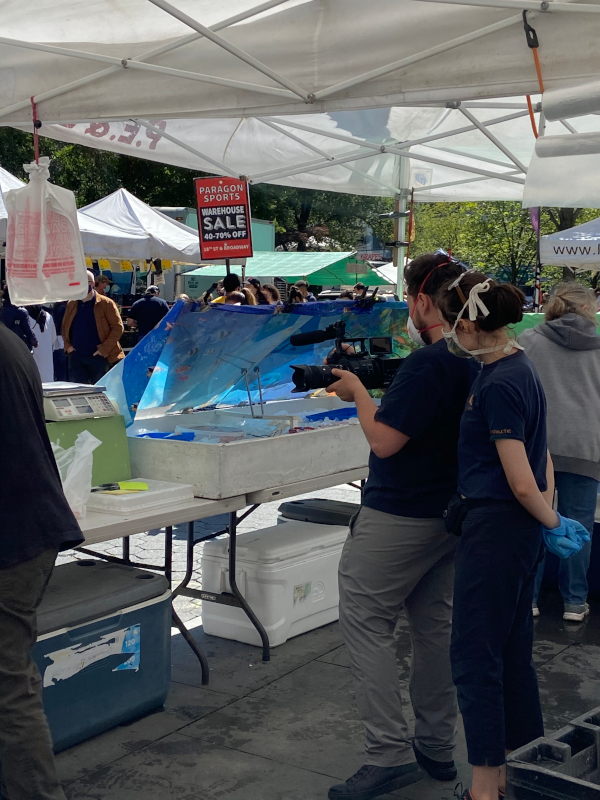
When I approached Wade to ask about filming a scene together, he was more than ready to ham it up for the camera. It was set to be our first two-camera, full-crew vérité shoot. After a failed attempt at this on the hottest day of the year (only one person bought oysters!), we reset and tried again, but with one catch – I had to work double duty that day behind and in front of the camera. As I was elbow-deep in the fish and ice, with my crew prepped and in place, a suddenly endless line of customers appeared. My heart was pounding. I tried to not let being filmed change my affect with the customers, tried to let myself be observed when I felt the camera on me. I remember pulling back the flap over the oysters for extra visibility, and feeling the version of myself that would have messily pushed through the flap ordinarily, having made a choice to deviate but simultaneously feeling a twinge of documentary guilt about it. In less demure moments, I’d try to shout over the noise of the stand, the five employees taking orders, clicking the high G-pitched buttons on the scales, the metal handle crashing into the plastic bins of ice. I overheard conversations and directed a second angle, I listened for more, I pointed out my oyster regulars as they arrived, I kept selling fish. Once or twice, I had the wherewithal to take a moment to feel the chaotic gravity of it all, on high alert like all my life I’d been preparing to fuse these experiences. Even though I’ll never be as camera-ready as Wade, who knocked it out of the park that day playing himself, I’m happy to have been depicted in this honest way, popping into the frame around its edges, directing the attention towards a new center of the New York City oyster story.
After nine months on the job, through the toughest parts of the winter at the year-round market, I suffered an oyster-unrelated freak injury that put me out of the fish-slinging game. I continued to direct without the use of my dominant hand, and by the time it was healed, I no longer could afford the time to work at the market. I’m survived by a long line of non-binary successors as the current P.E.&D.D. stand employees, which continues to be an unexpected haven for friendly eccentrics. In the film, Wade folds up Sam’s sleeve for them, and in certain theaters with the right sound mix, you can hear another employee quietly joking “Teamwork!” in the background. Elsewhere in the city, a laborer on a large barge struggles to release his charge – millions of oysters – into the harbor. His coworker takes over and they nod to each other. I love getting to focus my audience’s attention on these brief gestures of community, people going out of their way to help one another all around the boroughs. It’s the city I live in, and it’s the city I want to live in. The film’s city symphonic sense of connectivity by way of the oysters enlivens the perspective on the massive urban area – as though one could really be aware of every scene in the movie, every oyster in the harbor all at once.
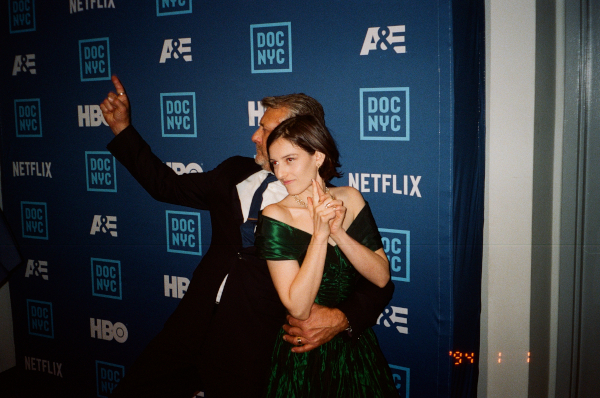
I stop by the market a couple times a month to check in with my fish fam and give updates on myself, my cat and the movie. Wade is proud as a peach to be a part of it, and showed up to the premiere in a tux. He’s hands down the best boss I’ve ever had. Should you find yourself in Union Square on a Saturday morning, get yourself some fresh fish, or some live oysters, and tell him I said hello.
Featured image, showing Emily Packer selling fish in Union Square, is by Lucas C. Ospina; all images courtesy Emily Packer.


